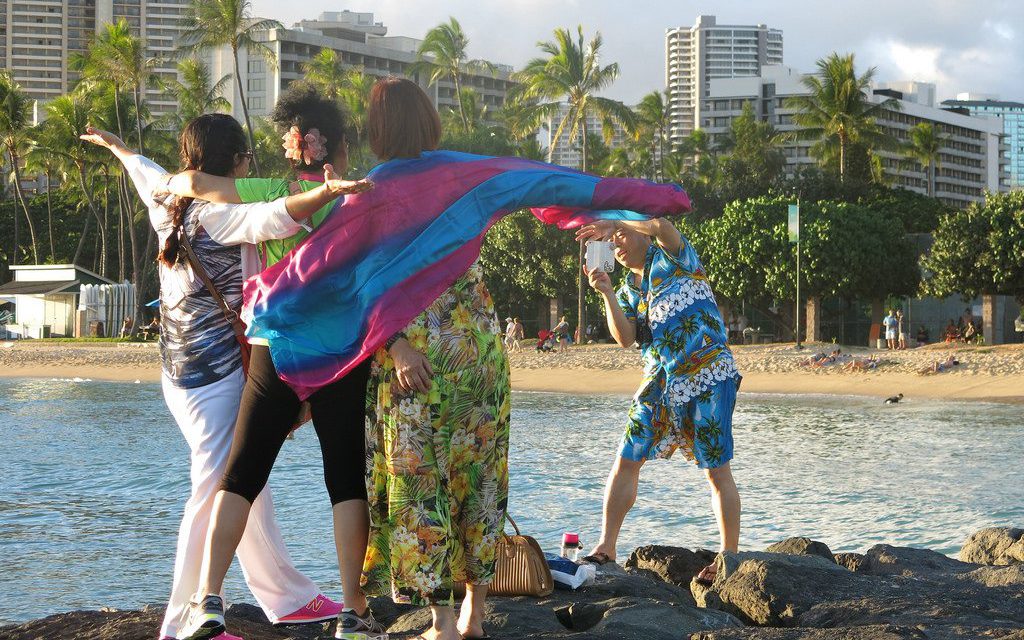Skift Take: While international visitor spending was in the black for January in many American destinations, data for the next few months will be more telling in how U.S. foreign policy is impacting travelers’ decisions to spend and vacation in the U.S.
As some destinations in the United States brace for the impact of President Trump’s travel ban and its unwelcoming message, the year started off with good news: International visitors to the U.S. began 2017 with the strongest January on record for tourism spending.
International travelers in January spent nearly $20.8 billion, an increase of 0.9 percent from January 2016, according to monthly statistics released this week by the U.S. National Travel and Tourism Office. The average foreign visitor spent about $672 per day in January on transportation, souvenirs, and other tourist related expenses.
Foreign visitors finished last year with an overall slight decrease in spending in the U.S. with $245.9 billion spent between January and December (down 0.1 percent year-over-year). In contrast, Americans spent about $158.9 billion on international travel last year.
The Skift Daily newsletter puts you ahead of everyone about the future of travel, subscribe.
Every month, the National Travel and Tourism Office releases data regarding recent travel and spending activity, including details about inbound travel to the United States. This is the most recent month for which this information is available.
In January, foreign visitors spent some $12.7 billion on goods and services that include food, accommodations, activities, local transportation and souvenirs; $3.3 billion on airfare (a 2.9 percent decrease over January 2016) and $4.6 billion on medical, education and short-term worker related travel. Passenger airfare receipts were on a decline for most of 2016 due to lower fuel prices.
Some destinations, however, aren’t celebrating good news with international spending so far this year. Hawaii, one of the more visited U.S. states with nearly nine million visitors (domestic and international) in 2016, said its international visitor spending was down for both January and February. Tourist spending from Japan was up 26.5 percent for January but spending from the rest of Asia-Pacific, Europe, and Latin America decreased 4.3 percent and Canadian tourist spending decreased 0.6 percent year-over-year.
For February, Hawaii’s data show international visitor spending (excluding Japan and Canada) was down 5.3 percent from February 2016 while spending from Japan was up 14 percent and Canada was up 11 percent. Lower spending from Europe and Latin America for both months coincides with decreases in arrivals from those markets.
The state’s overall visitor spending was up more than 10 percent for both months with spending from U.S. mainland travelers included in the mix.
The National Travel & Tourism Office measures international visitor spending in U.S. dollars and spending totals for some markets could be higher depending on currency conversions. Travelers could also be shifting spending to other expenses, such as retail, that isn’t included in the data.
January’s data also doesn’t account for any impact from President Trump’s travel ban, which originally took effect at the end of January before U.S. District Judge James L. Robart of Seattle stayed the executive order. U.S. and global travel industry organizations are also projecting that the U.S. has already lost millions of dollars — including tourism spending — from the ban.
The full statistics for January are below:
INTERNATIONAL VISITOR SPENDING IN THE U.S. FOR JANUARY 2017 ($ BILLIONS)
| International Traveler Receipts in U.S. | January 2017 | January 2016 | Percent Change 2017/2016 |
|---|---|---|---|
| Passenger Airfare Receipts (5) | $3,399 | $3,448 | -2.90% |
| Travel Receipts (for all purposes including education) (2) | $17,429 | $17,160 | 1.70% |
| -Travel Spending (3) | $12,782 | $12,928 | -1.50% |
| -Medical/Education/Workers Spending (4) | $4,647 | $4,232 | 9.50% |
| Total Travel and Tourism-Related Exports (1) | $20,828.00 | $20,608 | 0.90% |
Source: U.S. National Travel and Tourism Office
1) Travel and Tourism is the sum of all travel-related exports (or imports) and includes passenger fare receipts and payments.
2) Travel spending includes purchases of goods and services by U.S. persons traveling abroad and by foreign travelers in the United States for business or personal reasons. These goods and services include food, lodging, recreation, gifts, entertainment, local transportation in the country of travel, and other items incidental to a foreign visit.
3) All travel purposes include 1) business travel, including expenditures by border, seasonal, and other short-term workers and 2) personal travel, including health-related and education-related travel.
4) All expenditures for educational and health-related purposes (such as tuition, room and board paid for or provided by educational institutions, hospital charges, treatments, physicians’ fees, etc.) made by students and medical patients. Expenditures by border, seasonal and other short-term workers are also included in this total.
5) Fares received for the transport of nonresidents by U.S. air carriers between the U.S. and foreign countries and between two foreign points (exports), and the transport of U.S. residents by foreign air carriers between the U.S. and foreign countries (imports).
by Dan Peltier

